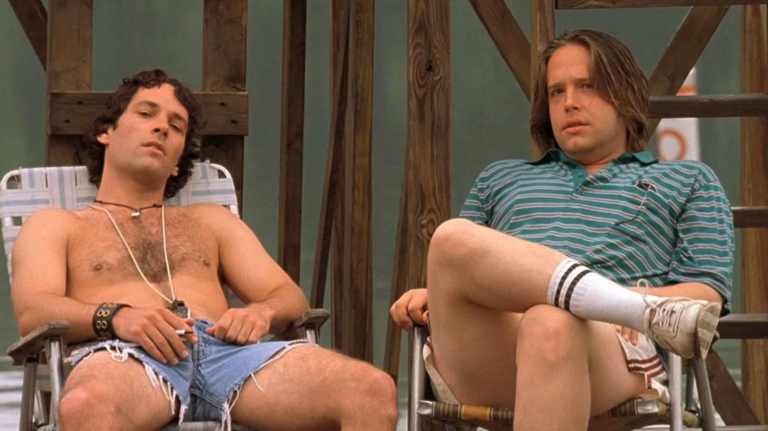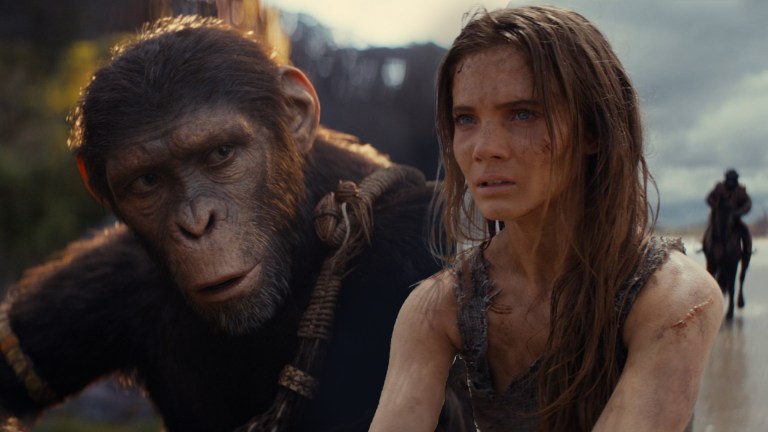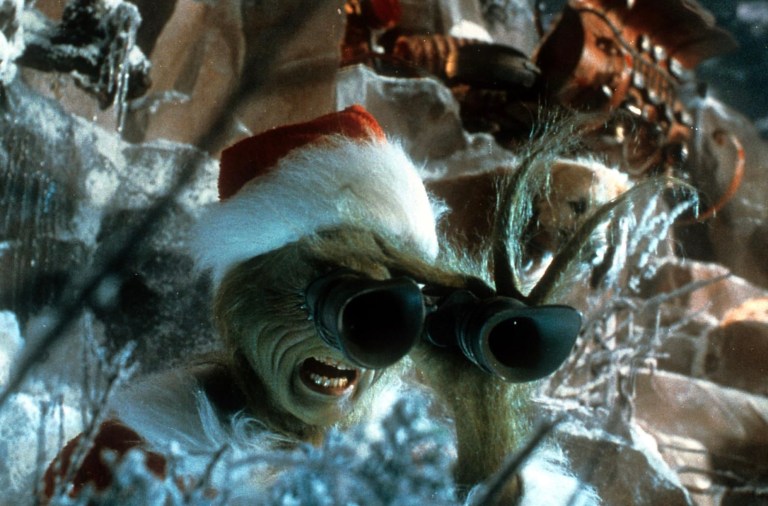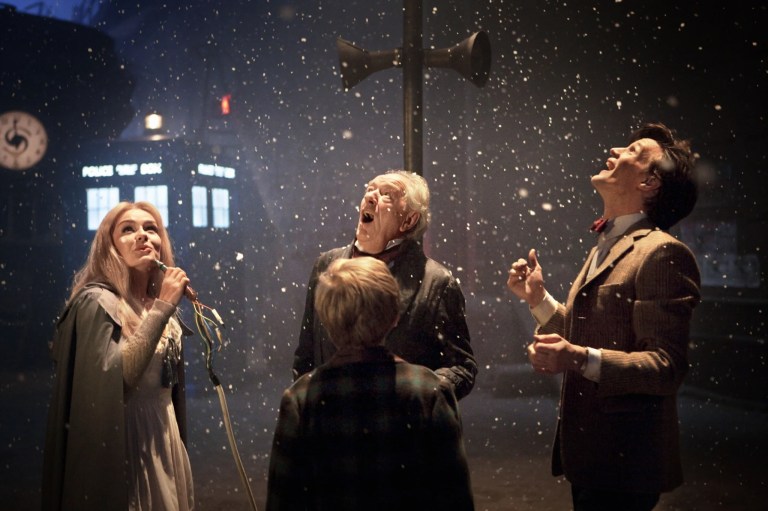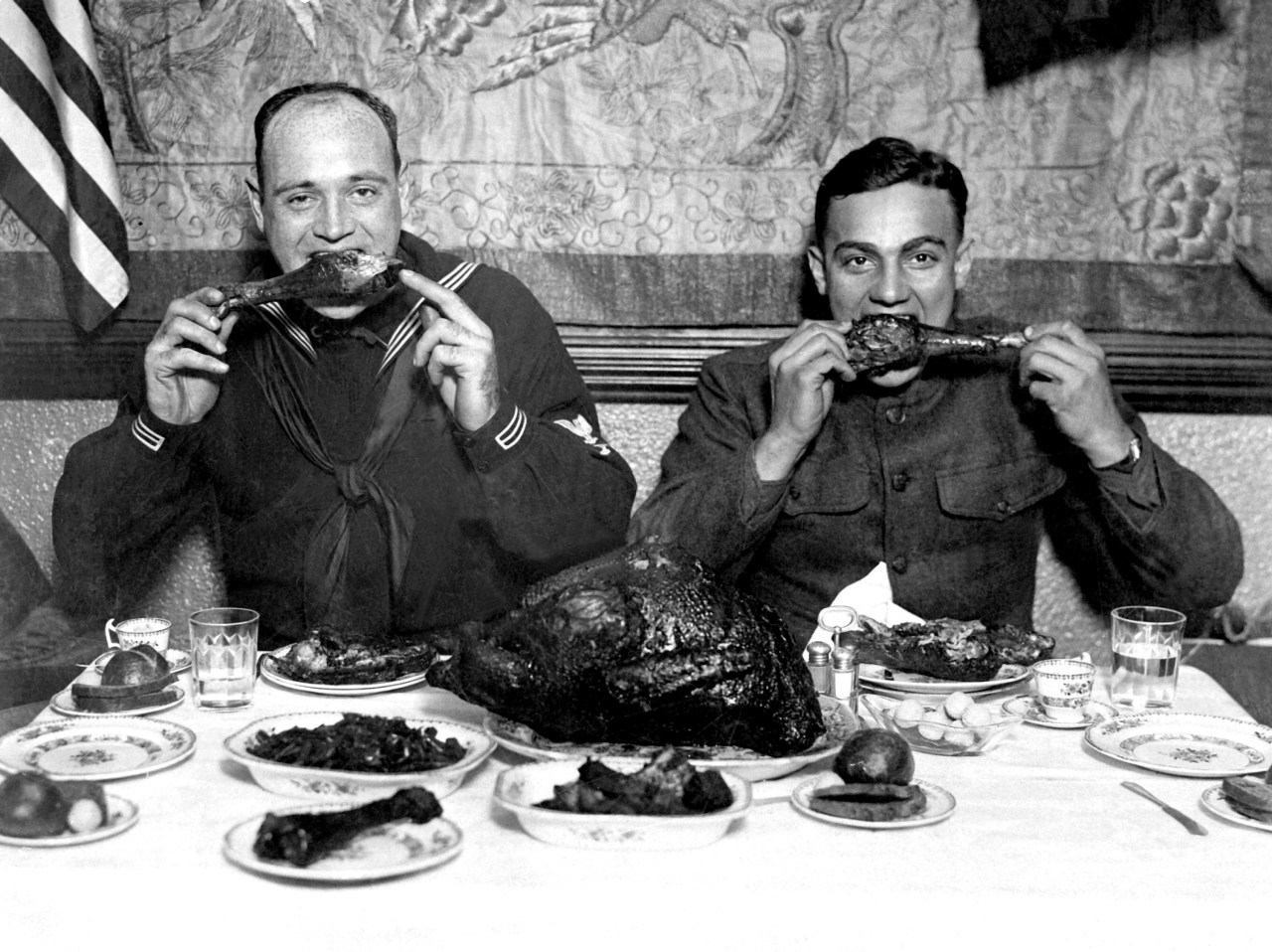
25 Little-Known Facts About Thanksgiving
23. Although we think about Thanksgiving being an American holiday, our Canadian neighbors to the north also celebrate it, just on the second Monday in October.
By ![]() Nico Lang
Nico Lang
Facts About Thanksgiving
1. When George Washington advocated for a national Thanksgiving celebration, a number of other founding fathers and statesmen were supportive of the measure. Thomas Jefferson was not one of them. Jefferson referred to the idea as “the most ridiculous thing I’ve ever heard.” (I guess he wasn’t a fan of cranberries.) The holiday wouldn’t become a thing until Lincoln signed a proclamation making it the last Thursday of November for Thanksgiving in 1863. This was after Sarah Hale, the editor of the women’s mag Lady Godfrey’s Book and creator of the “Mary Had a Little Lamb” nursery rhyme, repeatedly hounded Congress with letters to institute it.
2. Despite Lincoln’s proclamation, the date of the holiday was not fixed and the president could decide what date the holiday fell on — even though custom meant abiding by Lincoln’s earlier dictate. This was changed in 1941, when FDR signed a bill into law stating that the holiday would be celebrated on the fourth Thursday of every month. Meaning that Thanksgiving as we know it is only 71 years old, like Nick Nolte and Jessica Walter, the woman who plays Gangy on Arrested Development. Conclusion: Gangy and Nolte should be the official faces of Thanksgiving, which — when considering their shared love of alcohol consumption and making public scenes — makes a little too much sense.
3. In 1939, President Franklin D. Roosevelt changed the date of Thanksgiving to try to stimulate the holiday economy. Instead of the fourth Thursday of the month, he moved it up a week to lengthen the Christmas shopping season. Many Republicans protested the bump, declaring November 23 to be “Democrat Thanksgiving” (or “Franksgiving”) and November 30 to be “Republican Thanksgiving.” Many state governors defied his proclamation and celebrated the holiday on the last Thursday of the month, anyway. However, he showed them in 1941 with that whole “ability to pass national legislation” thing. Suck on that, GOP.
4. Despite FDR’s jockey to boost department store sales, “Black Friday” didn’t become a thing until the 1960s in Philadelphia. Then the mall capital of America, native Philadelphians used the term to refer to the swarm of shoppers that would descend on the malls the day after Thanksgiving. But the nicer origin myth is that the term described department store retailers’ desire to make a profit off of overstocked goods on that day, to be “in the black.” Nice spin job, guys.
5. St. Patrick’s Day might get the press, but the day before Thanksgiving (commonly referred to as “Black Wednesday,” “Blackout Wednesday” or “Wednesday” by Courtney Love) is the biggest day for bar and liquor sales in the U.S., also ahead of the Super Bowl or New Years’ Eve. Likely reasons include the start of the five-day weekend and the large influx of folks who have flocked on their hometowns for Thanksgiving, many of whom will not have family obligations until the next day and use the time to pre-game with old friends. If you’re going to see family the next day, you’ll need to already be a little drunk.
6. Although our Thanksgiving holiday commemorates the feast held on 1621 by the Pilgrims and the Wampanoag tribe, this technically was not the “first” Thanksgiving in the “New World.” A number of different celebrations have attempted to lay claim to the honor of getting there first, but the earliest likely dates back to 1541, when Francisco de Coronado and his expedition broke bread at Palo Duro Canyon in the Texas panhandle. De Coronado referred to the settlers there as the “Tejas.”
7. Native Hawaiians had their own Thanksgiving festival, one vastly predating the pilgrim celebration. It’s called “Makahiki” (meaning “year”) and lasts for four months, from October or November through February or March, making it the longest Thanksgiving celebration in history. For these months, Hawaiians were forbidden to work, and instead spent their time dancing, playing sports, feasting or making peace offerings to the chief. It sounds kind of like Burning Man.
8. Lincoln also accidentally started the trend of pardoning turkeys on Thanksgiving. Although Truman made the practice official in 1947, many historians trace the poultry pardoning back to Lincoln in the 1860s, who informally pardoned his son Tad’s pet turkey, Jack.
9. Many southern states weren’t initially supportive of a Thanksgiving celebration — because of the long-fought battle over states’ rights and the federal government’s ability to exercise unilateral control. (Federalism is confusing, ya’ll.) They were also not happy about the idea of celebrating what was largely seen as a “New England” holiday.
10. Thanksgiving football games have been around since the mid-1870s and began with college football. The then-nascent Intercollegiate Football Association (IFA) would hold annual championship games on Thanksgiving, ones that drew the ire of religious conservatives who felt the holiday should be reserved for worshiping God. Despite religious opposition, the Thanksgiving football tradition would be popularized by Yale and Princeton, who played their first game in 1876 and drew yearly crowds of 40,000 to see them duke it out. The National Football League would get into the act in 1934, with the Detroit Lions playing the Chicago Bears. The Dallas Cowboys would steal their idea in 1966, giving us two Thanksgiving games every year and even more opportunities for your Uncle Leo to get drunk and pass out mid-cheer.
11. The first Macy’s Thanksgiving Day festival did not include the giant balloons and floats that we see today. Instead, the organizers of the first parade in 1924 held it with live animals from the Central Park Zoo. This practice would last for the next three years, until the introduction of a balloon version of Felix the Cat hit the parade, a float sponsored by Goodyear. The first Mickey Mouse float would debut seven years later and the Snoopy balloon would end up holding the record for most appearances in the parade with six. He’s kind of a big deal.
12. Despite Macy’s being the largest, the oldest Thanksgiving parade was held in Philadelphia in 1920 by Gimbels department store. The parade was very small, with only about 50 people, and is today known as the 6abc/Dunkin Donuts Thanksgiving Day Parade. It was co-sponsored by IKEA until 2011.
13. Although we know of the Mayflower as the vessel used to transport pilgrims over to the Americas, this was not its original intended use. It was meant to be a wine transport vessel. Of its 102 passengers, only 41 of them were actually pilgrims, the religious separatists from Holland. The rest were “strangers,” the label applied to merchants, workers, craftsmen, orphans and indentured servants seeking refuge or fortune in a new land. “Strangers and pilgrims” may have referred to a verse from King James, 1 Peter 2: 11, asking those groups to “abstain from fleshly lusts, which was against the soul.” Only about 50 of the Mayflower passengers would survive to see the first Thanksgiving and five of those were women. If you do the gender math, it’s a little creepy sexual-intercourse-wise. #pilgrimgangbang
14. Unfortunately, pilgrims didn’t dress in all black with funny hats and oversized buckles all over everything. This representation of pilgrims began in the 19th century, when illustrators needed to create an image for the European settlers, who were becoming more recognizable as part of the Thanksgiving myth. This style of clothing was popular among fashionable classes in England in the 17th century, one that artists were more familiar with and appropriated for illustrated use. For instance, buckles would have been too expensive for poor settlers, and leather laces and straps for shoes and pants would have been more likely.
15. The domestic turkeys we eat at Thanksgiving today are quite different from the wild turkeys European settlers would have been eating, exhibiting far less genetic diversity due to years of selective farm breeding. The earlier turkeys actually were a Mexican variety that had been discovered during the conquest of Mexico, and today’s domestic turkeys are about twice their weight and cannot fly. Because of their role in feasting, turkeys were one of the first animals settlers domesticated. Rest assured: they will rise again.
16. According to some accounts of the “first” Thanksgiving, the pilgrims didn’t eat turkey at all, although they would be consumed at later Thanksgiving celebrations because of their abundance in the New England countryside. Colonist Edward Winslow’s record of the event mentions “wild fowl” served, but never specifies which fowl he means. (Duck and geese were other possibilities.) However, his journal does mention the serving of venison, shellfish and lobster, which makes me want Red Lobster real bad.
17. Modern Thanksgiving staples like cranberry sauce, sweet potatoes and pumpkin pie were not available at the 1621 celebration. Pumpkin pie would be introduced at the following year’s feast, but there’s no mention of cranberry sauce until the 1660s, about 40 years after the colonists’ first gathering. Also, pilgrims of the time wouldn’t have been eating sweet potatoes, because there weren’t any potatoes at all around that time. Green bean casserole wouldn’t come into the mix for another 300-ish years, when it was invented in 1955 by Campbell’s Soup.
18. In 2010, Americans buy around 244 million turkeys for Thanksgiving, meaning we eat a whole lot of poultry; however, about 18 million turkeys went unsold, which is the case every year. Due to this abundance of bird, Swanson came up with a creative use for leftover turkey in 1953. They sold it as part of a packaged meal that individuals could heat up for convenience. We now refer to those as TV dinners, which keep Liz Lemon alive.
19. Despite the overt Christian overtones imbued on Thanksgiving, the initial celebration was meant to be a secular celebration of the harvest. However, a Calvinist feast would happen in 1623, but none of the Native Americans were invited to the meal. Greedy Calvinists.
20. If anyone tries to argue against the non-Christianity of Thanksgiving, remind them that “turkey” is originally a Hebrew word, a corruption of the word “tukki.” During Columbus’ travels to America, Luis de Torres, his Jewish interpreter, called the wild birds “tukki” because of their resemblance to peacocks, or “tikkuyim.” Another version has the name originating from “tuka,” the word for peacock in the Indian Tamil language. Either way, turkey does not = Jesus.
21. Benjamin Franklin wanted the turkey to be the official bird of the United States. He felt that the eagle had a “bad moral character” and wanted to honor the turkey as a “native” bird with relevance to our nation’s history of celebrating overeating. However, because of that whole “getting struck by lightning” and “syphilis” thing, his credibility, judgment and hair follicles were somewhat damaged. They went with the eagle instead.
22. Turkey gets a bad rap for making you sleepy on Thanksgiving. Because of the low levels of tryptophan in your holiday poultry, its role as a sleep aid is largely a myth, as pork, chicken and cheese all contain higher tryptophan counts than turkey does. Instead, the reason you get tired is the combination of booze, overeating and prolonged exposure to your crazy aunt Bettina, which always makes you tired.
23. Although we think about Thanksgiving being an American holiday, our Canadian neighbors to the north also celebrate it, just on the second Monday in October. (Does that mean they get the rest of the week off? If so, Americans need to get on that turkey train.)
24. For those who aren’t in support of Thanksgiving (because of that whole celebrating genocide thing), you’re in luck! Every year on Alcatraz Island the International Indian Treaty Council puts on “Unthanksgiving Day” to commemorate the struggles of indigenous Native Americans against European imperialism. The event began in 1975, four years after the American Indian Movement occupied Alcatraz, and is open to the public. Who wants to go?
25. Thanksgiving is actually an Illimunati celebration that makes us all into reptilian slave robots from outer space controlled by our all-powerful zombie overlord, Tom Cruise. What else do you think happens at those shopping malls on Black Friday? JUST KIDDING, AMERICA. Happy food coma! ![]()
